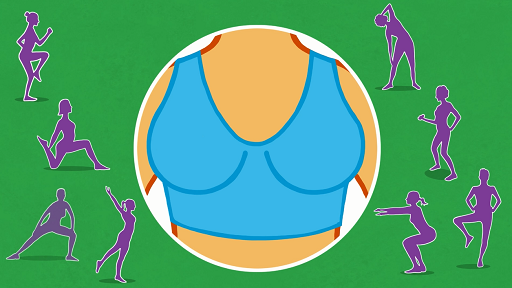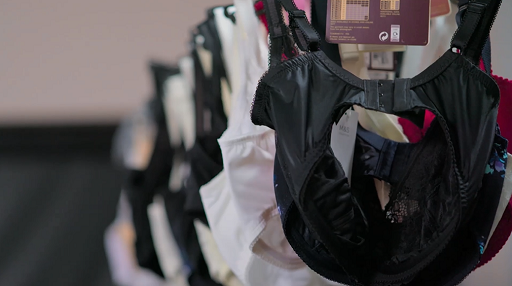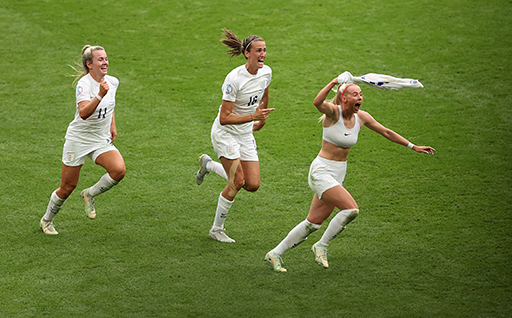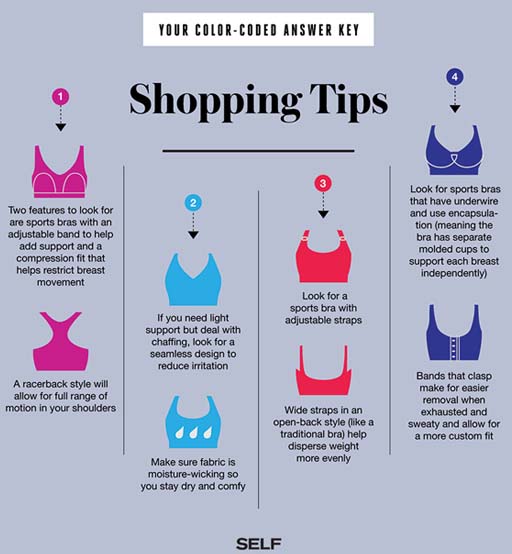5 Bras and breast support available
Research indicates that over 80% of women wear ill-fitting bras (Research Group in Breast Health, 2021) and when it comes to sports bras many women don’t even own one, with 50% of 11–18-year-olds not wearing a sports bra for PE or sport. Yet, wearing inadequate breast support, such as an everyday bra, to participate in sport and exercise can cause permanent damage and negatively impact performance. The importance of the sports bra as essential sports kit has been cited by many sportswomen and was demonstrated in the move by the England Institute for Sport (EIS) to provide GB athletes with bespoke bras for the 2020 Tokyo Olympic and Paralympic games (EIS, 2021). The crucial element here was that athletes were professionally fitted for the right size bra, but also to ensure the athlete wore the right style of sports bra to suit their breast size and sporting movement.
Activity 4 How to select the right sports bra
Watch the animation which explores the benefits of a good sports bra and then watch the video showing an experiment involving the three types of sports bra.

Transcript

Transcript
[MUSIC PLAYING]
Then complete the table below to evaluate each type of sports bra:
| Type of sports bra | Features | Advantages | Disadvantages | Movement reduction |
|---|---|---|---|---|
| Compression bra | Crop top style which pulls over the head and compresses breast tissue against chest wall. Suitable for smaller breasted females. | |||
| Encapsulation bra | Separates to provide support to each breast individually. Centre part sits flat against chest wall. Beneficial for larger breasted women. | |||
| Combination bra | Combines features of compression and encapsulation bras. Supports the breasts separately but also compresses them against the chest wall. |
Discussion
| Type of Sports bra | Features | Advantages | Disadvantages | Movement Reduction |
|---|---|---|---|---|
| Compression | Crop top style which pulls over the head and compresses breast tissue against chest wall. Suitable for smaller breasted females. | Comfortable, suitable for more low impact activities such as yoga. | As it has to be stretchy enough to fit over the shoulder there is a limit to their capability to reduce movement. | Up to 55%. |
| Encapsulation bra | Separates to provide support to each breast individually. Centre part sits flat against chest wall. Beneficial for larger breasted women. | Offers greater support and reduces movement in all directions. Vital for high impact activities. | Structured form and rigid material can be less comfortable than soft, stretchy fabric used in compression bras. | Up to 73%. |
| Combination bra | Combines features of compression and encapsulation bras. Supports the breasts separately but also compresses them against the chest wall. | Offers good support but may not control movement during high impact activities, such as running, as well as the encapsulation bra. | It may be less comfortable for females with larger breasts. | Not stated in the video but more than the compression bra and less than the encapsulation bra. |
As the animation and video show there are typically three types of sports bra for women to choose from and they should select the bra that is most appropriate for them in terms of how it fits, what they are going to wear it for and how comfortable it feels. It is important to be fitted for a sports bra and ensure that it provides the support that you need.
In addition to the three common types of sports bras there are also different features of a sports bra that can impact the effectiveness of the support it provides. A study by Norris et al. (2021) into the characteristics that impacted the effectiveness of sports bras revealed that there were five key features that contributed to greater support:
- an encapsulation style (separates the breasts)
- padded cups
- made from Nylon
- an adjustable under band
- a high neckline.
A summary of their study of how to choose the most effective sports bra for yourself is provided in Figure 2.


